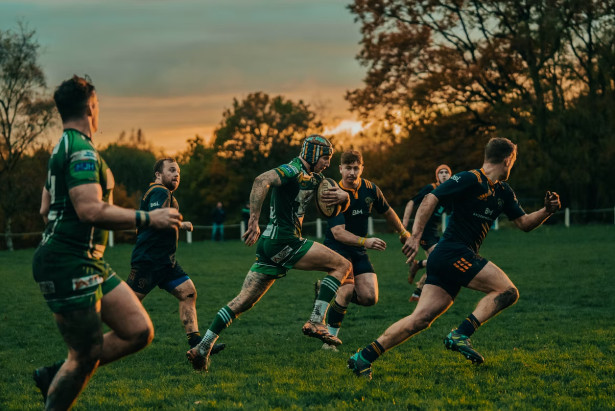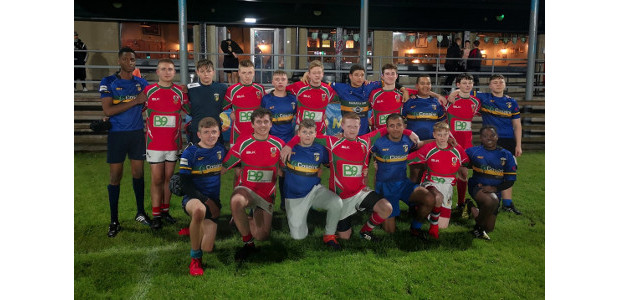Image Source
What Is Touch Rugby? 2022 Easy To Understand Guide For The Sport
Touch rugby is a popular game that is played by a lot of people worldwide. It is an easy sport to understand where you can also play if you fully understand its rules. However, it is frequently mistaken for the Rugby League, an entirely different sport. Then, what exactly is touch rugby?
If you are interested or new to the sport, and are trying to know more about it, here are a few fundamentals to keep in mind.
What Is Touch Rugby?
If you bet on rugby or are just a casual fan, you know how physical a game usually goes. But on the other hand, ouch Rugby, or Touch, is a rugby game that does not tackle its opponents. They instead touch them in any parts of their opponent’s body, clothing, or ball using their hands. In other words, touch rugby can be considered a game of no-touch rugby with minimal contact, unlike traditional rugby games that also forbid kicking.
Many players of all sexes can avoid significant injuries. Touch sport is also being played by athletes of all ages, from primary school children to older adults.
Touch Rugby vs. Rugby League
Rugby League is a full-contact sport where it includes tackling the opponents. The touch’s primary difference with rugby league is that it is a safer and easier rugby type. It was developed from the rugby league itself, but now it exists as an entirely different sport.
Primary Rules
To score in touch rugby, a player must place a ball on the opposition line and ensure that it is in contact with the player’s hand as it reaches the ground. Touch ground has almost similar rules to the league but with a slightly different set of rules:
● The game starts with all the players’ feet on the ground. They will only move the ball with their feet when the game starts and pick it up to continue.
● Only six players from each team are allowed to play.
● A legal touch is when a player touches the opponent’s body, clothing, and ball. The player must shout and claim “touch.” only the referee can be the judge of the touch and the sole person to overrule the claim.
● When touch is called, the player that possesses the ball must put it down at the exact point of contact. Then, rollball will take place, where they step over or roll the ball to change possession.
● The dummy-half who will get the ball may run, but another rollball will take place if they are touched.
● During the rollerball, all defenders will need to move 5 meters away at a minimum. Penalties will be employed to the players who will not move.
● Touchdown will be called for the players who successfully scored over or on the opponent’s line.
Playing Field
The playfield is 70m wide from each other’s scoreline. Although the sport sounds relatively easier than rugby league, the playing field touch is slightly bigger than theirs. One core difference between the two is that the touch’s playing field does not need a goal post because of its nature of not allowing any kicking during the game, unlike the rugby league.
Positions
Only 14 players are allowed to play during the game, with a maximum of six players playing on the field. Moreover, a touch rugby team is divided into three main positions: middles, links, and wingers. Two members will be assigned in each position to complete the team.
Middles
The middles or middlemen are the ones that are the fittest and the most consistent. They are the crucial players with the best and higher workload of defenses since they will need to cover the other middlemen and their link players.
Links
Link players are the ones who keep the wing and middle players aligned in defense. They are on either side of two middles and inside a winger. Players with link positions must possess excellent footwork and ball handling. Links are the critical attackers in touch where they open opportunities for their teammates and prevent other teams from scoring.
Wingers
On the other hand, wingers position outside links and are usually the fastest players. They are well-rounded and must possess quick wit to create decisions during crucial times immediately. They are usually the ones who blow the attaching moves with the hopes of touching down in a corner.
Penalties
For a more clean and thorough game, referees will execute penalties. The common types of touch penalties are the following:
● The sole judges, referees, will give the sentence forward pass to the players who will pass a ball forward.
● The referee will give the penalty late pass if a player places the ball even after being touched.
● When taking a penalty, the player will place the ball on the ground, and the defending team must retreat quickly.
● When a defending player deliberately or unintentionally touches a ball while it is being passed to another player, the touch count will return to zero, especially if the attacking team still caught the ball. So players will restart the set.
● However, when the ball is directly thrown to or knocked on a defender before it hits the ground, the defender will gain possession of the ball.
● The offside penalty will be called if a player does not retreat after being touched, which can trigger a restart to the touch count.
● Most importantly, players will carry out penalties if more than a minimum force is made when making a touch.
Final Thoughts
Now that you have the primary idea of the touch sport, you can finally offer full support to your favorite team, join a group, or wager on them with less confusion than before! Touch rugby is a fun game where you can socialize and make friends. Thus, it would be good to take advantage of this fact!









